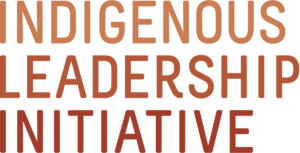Indigenous Peoples on Frontline of Climate Impacts & Climate Solutions
Photo credit: Pat Kane Photo
By Ethel Blondin-Andrew
November 1, 2021
My people gave me what I needed to survive in this world. My parents raised me on the land. We traveled by dog team, by boat and on foot. My parents taught me to love and respect the land, the animals, and the people. My grandmother gave me the gift of my Dene language and ceremony to pay the land back as we take from it. This is a huge part of who I am and what I do as a Shúhtagot'ine Dene. I am not alone.
While there is incredible diversity among Indigenous Peoples, we share a powerful commonality: we center our interrelationship with the land and water. We understand our fundamental dependence upon the land. And we continue to act with this in mind.
This understanding must be front and center at the international climate talks in Glasgow.
Not only do Indigenous communities feel the brunt of climate impacts, including devastating wildfires and deadly heat. But we also have a relationship to the land that can help rebalance the world in the midst of climate chaos.
Our stewardship is proven to reduce carbon emissions by sustaining the lands and waters we all depend on. This is especially true in Canada, where Indigenous Protected and Conserved Areas and Indigenous Guardians programs provide the single most important strategy for addressing both climate change and loss of biodiversity.
Canada has set out to be a global leader on climate action and biodiversity. Respecting and supporting Indigenous-led conservation will ensure it lives up to those commitments.
Changes on the Land in the North
The impacts of climate change are inescapable for us in the Sahtu region because we live within our environment. We live with the animals and the waters and the lands, and we are sensitive to the shifts in climate.
Weather patterns have become erratic, sweltering one part of the day, then frigid the next. Our mountain caribou used to be abundant. Now the lichen they love and rely on for food is brittle and dry, instead of soft and moist. Caribou like to gather around glaciers, but many of those have dissipated, reducing runoff and leaving the caribou to overheat.
Photo credit: Peter Mather
Rivers are now running warmer, but fish require cold waters. If the water is too hot when they need to spawn, we see a downturn in that species. And people have a harder time traveling by boat because rivers become too shallow. It’s expensive to get out on the land here if you can’t go by boat. It effects our food security and our traditional ways of being in our territory.
Caring for the Land, Keeping Carbon Safely Stored
Even while Indigenous Peoples see the impacts of climate change up close, our relationship with the environment helps us repair and sustain it.
I live in the Boreal Forest, the largest intact forest left on the planet. The boreal also holds about 12 percent of the world’s land-based carbon reserves. That’s the equivalent of up to 36 years’ worth of carbon emissions from global fossil fuels.
Indigenous Nations across the boreal are conserving lands that store this carbon, preventing it from escaping and making climate change worse. The lands around Hudson Bay, for instance, are some of the densest carbon stores in the forest. West of the Bay, the proposed Seal River Watershed Indigenous Protected Area in northern Manitoba holds 1.7 billion tonnes of carbon—equivalent to 8 years’ worth of greenhouse gas emissions in Canada.
That’s just one of dozens of Indigenous-led initiatives growing up from the land. Meanwhile, over 70 Indigenous Guardians programs are serving as the eyes and ears on the land for their Nations. They monitor changes on the land, and their research informs government policy and makes communities more resilient.
Taken together, Indigenous-led conservation offers a powerful climate solution: research shows that land stewardship can deliver one-third of the emissions reductions needed to meet the Paris Climate Agreement.
We Must Work Together
Indigenous Peoples within Canada and around the world must be heard at COP26. But Indigenous Peoples can't do it alone. Tackling climate change requires leadership from all peoples and all nations. It requires a global realization that we all breathe the same air.
And we must all adapt and innovate. Our own people have been adapting for millennia. Adaptation is essential for life on the land. To survive as humanity, we cannot destroy the land—the one thing that keeps us living, breathing, traveling, being human.
Photo credit: Pat Kane Photo




